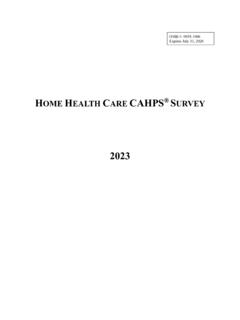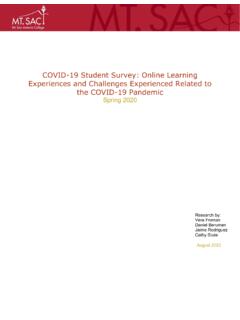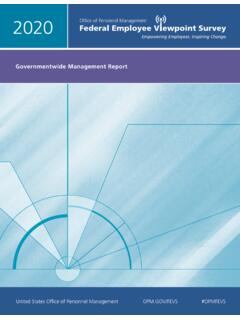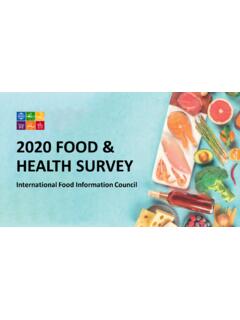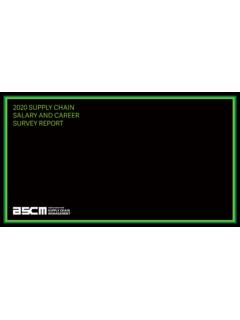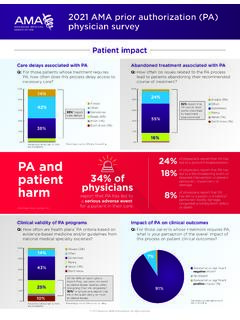Transcription of OECD INFE 2020 International Survey of Adult Financial Literacy
1 OECD/INFE 2020 International Survey of Adult Financial Literacy 1 OECD/INFE International Survey OF Adult Financial Literacy oecd 2020 OECD/INFE 2020 International Survey of Adult Financial Literacy 2 OECD/INFE International Survey OF Adult Financial Literacy oecd 2020 This document and any map included herein are without prejudice to the status of or sovereignty over any territory, to the delimitation of International frontiers and boundaries and to the name of any territory, city or area. oecd 2020 You can copy, download or print OECD content for your own use, and you can include excerpts from OECD publications, databases and multimedia products in your own documents, presentations, blogs, websites and teaching materials, provided that suitable acknowledgment of OECD as source and copyright owner is given.
2 All requests for commercial use and translation rights should be submitted to cite this publication as: OECD (2020), OECD/INFE 2020 International Survey of Adult Financial Literacy 3 OECD/INFE International Survey OF Adult Financial Literacy oecd 2020 Financial education, Financial consumer protection and Financial inclusion are recognised at the highest policy level as three essential ingredients for the Financial empowerment of individuals and the overall stability of the Financial system, as highlighted through three sets of high-level principles endorsed by G20 leaders.
3 Innovative Financial Inclusion (2010); Financial Consumer Protection (2011); and National Strategies for Financial Education (2012). As indicated in the High-level Principles on National Strategies, developed by the OECD International Network on Financial Education (OECD/INFE), assessing the Financial Literacy competencies of the population is a key component of a successful national strategy. The opportunity to collect data using an internationally relevant instrument through a co-ordinated exercise further increases the value of such an assessment by enabling economies to benchmark themselves, identify common patterns and work together to find solutions for improving Financial Literacy and well-being within their respective populations.
4 Some 26 countries and economies (of which 12 OECD member countries), drawn from Asia, Europe and Latin America, participated in this second International Survey of Financial Literacy competencies using the globally recognised OECD/INFE toolkit. This worldwide exercise is a key achievement for the OECD/INFE, which set the development of a method to measure and compare Financial Literacy as one of its three initial objectives. The results provide information about Financial Literacy that go beyond knowledge, covering aspects of Financial behaviour and attitudes.
5 Trends of Financial inclusion are reported. Particular attention has been paid to elements that provide insights into the Financial resilience of individuals, an important characteristic that is proving very pertinent during times of economic and Financial volatility. A novel score for Financial well-being has been computed. The report also seeks to identify potential target groups within the populations by differentiating Financial Literacy scores by individuals characteristics (such as gender, age, digital use and level of savings as an approximation of Financial resilience).
6 The publication was prepared by Kiril Kossev with oversight by Flore-Anne Messy, Adele Atkinson and Andrea Grifoni in the Insurance, Private Pensions and Financial Markets Division of the OECD Directorate for Financial and Enterprise Affairs. Editing support was provided by Jennah Huxley in the Insurance, Private Pensions and Financial Markets Division of the OECD Directorate for Financial and Enterprise Affairs, Data collection was undertaken by authorities in the individual countries and 5 OECD/INFE International Survey OF Adult Financial Literacy oecd 2020 Table of contents Foreword 3 Executive summary 7 Introduction 111 Financial Literacy and its components 13 Financial Literacy scores 14 Financial knowledge 19 Financial knowledge questions 19 Minimum knowledge target score 21 Self-reported Financial knowledge 22 Financial behaviour 24 Financial attitude.
7 Attitudes to longer-term Financial planning 27 2 Financial inclusion measures 29 Product awareness and choice 29 Product holding 31 Financial knowledge levels and Financial product holding 33 3 Outcomes of Financial education: resilience and well-being 35 Elements of Financial resilience 36 Keeping control of money 36 Taking care with expenses 39 Financial cushion 40 Experiencing Financial stress 43 Financial planning 45 Fraud awareness 47 Financial well-being 51 4 Potential vulnerable groups 57 Gender 58 Age 60 Digital use 60 Financial resilience 61 5 Lessons and policy recommendations 63 Annex A.
8 Tabulated data used for the charts in the main text 676 OECD/INFE International Survey OF Adult Financial Literacy oecd 2020 Tables Table 1. Financial Literacy scores 15 Table 2. Financial Literacy scores, normalised to 100 17 Table 3. Correct answers to the seven Financial knowledge questions (%) 20 Table 4. Financial knowledge score (% of maximum, by number of products held) 34 Table 5. Availability of a Financial cushion in case of loss of income 43 Table 6. Falling victim to fraud 49 Table 7. Statements that make up the Financial well-being score 53 Table 8.
9 Financial well-being score 55 Table 9. Absolute scores by gender and the statistical significance between them 59 Figures Figure 1. Financial Literacy scores 16 Figure 2. Financial Literacy scores, normalised to 100 (score of 21=100) 18 Figure 3. Financial knowledge score 21 Figure 4. Minimum target score (5 or more) on Financial knowledge 22 Figure 5. Self-reported Financial knowledge 23 Figure 6. Financial behaviour 25 Figure 7. Minimum target behaviour score 26 Figure 8. Financial attitude score 27 Figure 9. Minimum target score (more than 3) on Financial attitudes 28 Figure 10.
10 Indicators of Financial inclusion 30 Figure 11. Product holding 32 Figure 12. Financial knowledge score, as a percentage of maximum, by number of products held 33 Figure 13. Keeping watch over finances 37 Figure 14. Ways of dealing with a Financial shortfall 38 Figure 15. Carefully considering expenditure 39 Figure 16. Paying bills on time 40 Figure 17. Availability of a Financial cushion in case of loss of income 41 Figure 18. Differences in available Financial cushion 42 Figure 19. Experiencing Financial shortfall 44 Figure 20.










